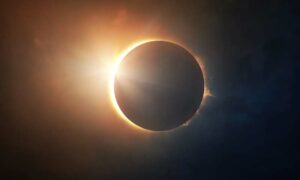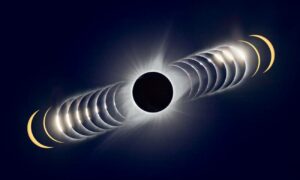Is there a chance that the temperature and other conditions of the recently found “super-Earth” may support life?
At just 137 light-years away, the new exoplanet is “fairly close to us” and is in a “habitable zone,” according to NASA.
The planet, known as TOI-715 b, is believed to be 1.5 times wider than Earth and is in orbit around a tiny, reddish star. Another Earth-sized planet may be present in the same system; if verified, it “would become the smallest habitable-zone planet discovered by TESS [the Transiting Exoplanet Survey Satellite] so far,” according to a NASA press statement dated January 31.
The super-Earth may be in a conservative “habitable zone” because of its distance from its parent star and have the proper temperature for liquid water to form on its surface, which is required to support life, the agency said, adding that “several other factors would have to line up, of course.”
According to NASA, the newly discovered planet and possibly the smaller Earth-sized planet are in “prime position” from its parent star because of the measurements of the habitable zone, which provide “a narrower and potentially more robust definition than the broader ‘optimistic’ habitable zone”.
According to the organization, a “year” on the planet is equivalent to 19 Earth days due to the super-Earth’s short orbital period around its parent star, a red dwarf that is smaller and colder than the sun.
According to NASA, the planets can be “planets can be more easily detected and more frequently observed” due to their closer orbits.
NASA noted that since its debut in 2018, TESS has been contributing to the collection of exoplanets in the habitable zone, like TOI-715 b, that researchers may be able to look at more closely with NASA’s James Webb Space Telescope.
According to NASA, the Webb telescope is intended to “explore the composition of their atmospheres, which could offer clues to the possible presence of life” in addition to detecting exoplanets.
At the University of Birmingham in the United Kingdom, Georgina Dransfield led the super-Earth research and finding, which was published in the “Monthly Notices of the Royal Astronomical Society” release in January.
According to NASA, the results represent an important step in the astronomers’ quest to determine the atmospheric conditions necessary for life to exist and to explore the characteristics of exoplanets outside our solar system.
- Top 5 Health Insurance Stocks to Add to Your Portfolio - July 26, 2024
- 7 Reasons Edamame is Great for Your Health - July 26, 2024
- 2024 Paris Olympics: How Many US Athletes Are Competing? - July 26, 2024





